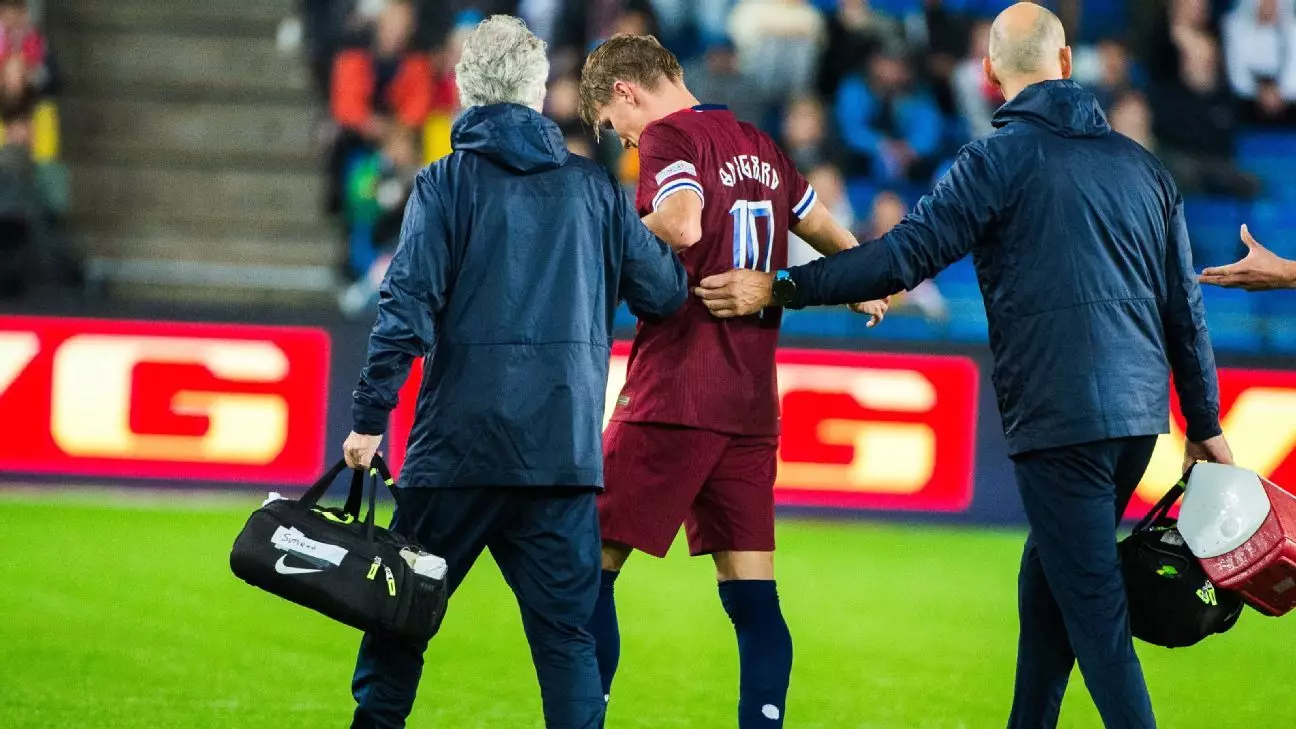The absence of key players in football can shift the tides for both club and country, and Martin Ødegaard’s recent situation exemplifies this reality. The talented Arsenal midfielder has been sidelined from Norway’s upcoming Nations League matches due to the need for additional recovery time following an ankle injury. While Ødegaard’s desire to represent Norway is evident, medical assessments have deemed it necessary for him to focus on rehabilitation instead. This article will delve into the implications of his absence on both Norway’s national team and Arsenal’s performance in the English Premier League.
Considerations for National Duty
The Norwegian Football Federation announced this week that Ødegaard will not participate in the matches against Slovenia and Kazakhstan. This decision stems from the player’s slow recovery from an ankle injury sustained during a national team match on September 9. Although he made a brief appearance in Arsenal’s Champions League match against Inter Milan, his performance—including a start in a draw against Chelsea—was not reflective of his full capabilities. It is crucial for athletes, especially those coming back from injuries, to listen to their bodies. Ødegaard’s statement reiterates his commitment both to personal health and to the national team, expressing disappointment over missing the games but highlighting the importance of prioritizing recovery.
This sentiment is shared by Norway’s medical staff, who have classified the injury as “complicated”. Team doctor Ola Sand underscored the necessity behind the decision, indicating that the player’s physical readiness remains a concern. The need for him to return to London for further rehabilitation before being properly match-ready is a thoughtful move geared towards ensuring his long-term fitness. Resting Ødegaard will allow him not only to regain full strength but also to prevent the risk of further injuries that could derail his season.
Ødegaard’s absence from Arsenal has been pronounced, particularly in key matches that have seen the team stumble. The Gunners achieved victories in three of their first four Premier League games without him, demonstrating the squad’s depth and resilience. However, the losses to Bournemouth and Newcastle highlighted a vulnerability that many fans attributed to the lack of Ødegaard’s creative spark in midfield. While Arsenal has shown they can compete at high levels, it’s evident that his playmaking abilities are integral to the team’s overall performance.
The player’s vision and technical skill lend a unique quality to Arsenal’s attacking play that is hard to replicate. Manager Mikel Arteta must now navigate the challenges posed by his absence in an increasingly competitive season. Arsenal is currently languishing nine points behind league leaders Liverpool, and without Ødegaard, they face the pressure of not only regrouping but potentially recalibrating their tactics for attacking success in the matches leading to November.
Looking ahead, Ødegaard’s return will be keenly anticipated by both fans and teammates. His commitment to fully recover suggests an athlete who understands the importance of not rushing back to action. The face of Arsenal might shift in response to his complete recovery; the hope remains that he will return in time to make an impact as the season progresses.
Ødegaard’s recovery timeline not only affects his individual aspirations but also significantly impacts the performance of Norway and Arsenal in their respective competitions. The medical team’s emphasis on caution is a vital strategy to secure his health for long-term contributions. While his absence may pose immediate challenges, it is a necessary decision to ensure that Ødegaard can return at full fitness—benefiting both his national team ambitions and his club’s pursuit of success in the Premier League and beyond.

